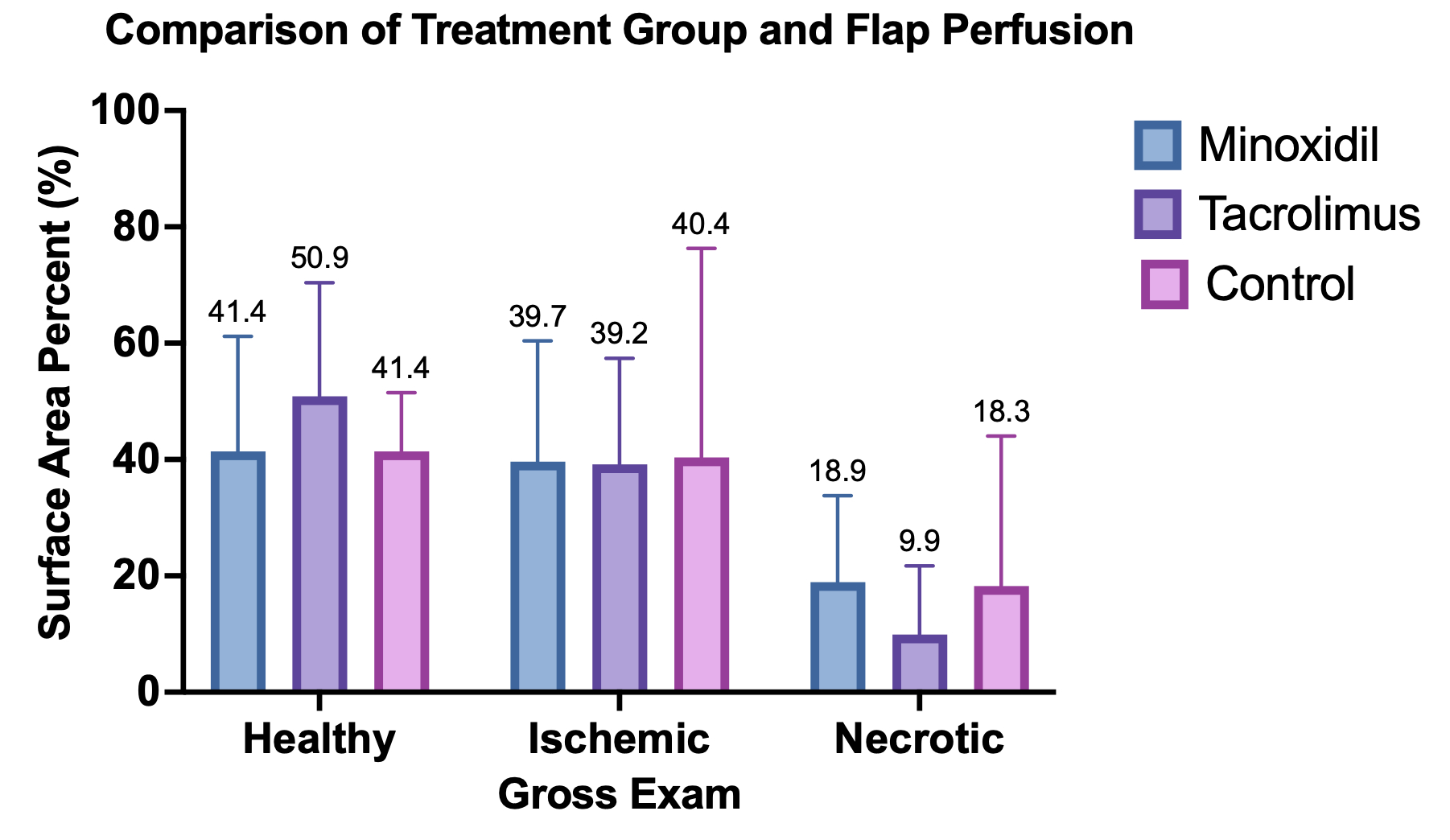Rat-tling the Status Quo: Exploring the Effects of Topical Minoxidil, Tacrolimus, and Petroleum Jelly on Skin Perfusion in a Rodent Ischemia Model
Albert Truong*, Yunchan Chen, Grant G. Black, Marcos Lu Wang, Y-Vu Van, Linglei Ma, David Otterburn
Weill Cornell Medicine, New York, NY
Skin necrosis is a pervasive challenge in the realm of plastic surgery, particularly for breast cancer patients who undergo reconstruction. Tacrolimus, a calcineurin inhibitor with potential to enhance the growth of lymphatic collateral vessels and mitigate lymphedema, was posited as a possible solution to reducing necrosis. Minoxidil is a vasoactive agent that has also been shown to improve perfusion and angiogenesis. The aim of this study is to further investigate the effects of these topical agents on skin perfusion on a rat ischemia model.
24 Sprague-Dawley rats were randomized to two treatment arms (0.1% topical tacrolimus, 5% minoxidil) and 2 were used as control (petroleum jelly). The rats are treated for seven days preoperatively, after which a cranially based dorsal skin flap measuring 3 x 10 cm was raised. Treatment continued for seven days after the surgery. On POD 8, the rats are sacrificed. Regions of full perfusion (viable tissue), partial necrosis (reversible ischemia), and full thickness necrosis were measured. H&E-stained tissue cross sections are evaluated by a pathologist.
The average full perfusion (viable) areas for topical minoxidil, tacrolimus, and control were 41.4%, 50.9%, and 41.4%, respectively. Tacrolimus led to the lowest area of compromised (ischemic and necrotic) tissue compared to minoxidil and petroleum jelly treatments (49.1% vs. 55.6% and 58.6%). On histopathology examination, the tacrolimus group showed increased density of thin-walled capillaries with interspersed fibroblasts, myofibroblasts and inflammatory cells, well-formed granulation tissue underlying the skeletal muscles, and less deep tissue necrosis than the other groups.
Skin necrosis following reconstructive surgery can result in delayed wound healing, increased infection risk, prolonged hospitalization, and negatively impact aesthetic outcomes. Pre- and post-surgical treatment with topical tacrolimus resulted in notably less necrosis than minoxidil and control. Immunohistochemistry evaluations corroborated the gross findings.
Back to 2023 Abstracts


